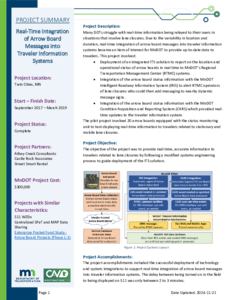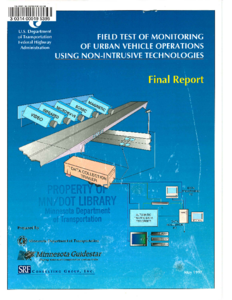Implementation of Inductive Loop Signature Technology for Vehicle Classification Counts
Date Created
2024-12
Report Number
2024-29
Description
Field Test of Monitoring of Urban Vehicle Operations Using Non-intrusive Technologies
Date Created
1997-05
Description
Trilogy Operational Test: Final Report
Date Created
1998
Description










